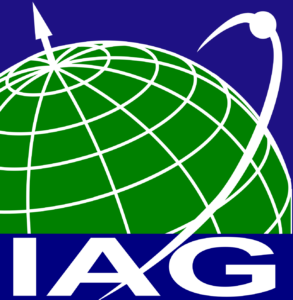Working Groups 4.3:
WG 4.3.2: Ionospheric state predictions and early warnings forspace weather services
Chair: Murat Durmaz (Türkiye)
Vice-Chair: Marjolijn Adolfs (Germany)
Terms of Reference
Disturbances in the state of upper atmosphere especially in ionosphere may adversely affect power grids, navigation, information and communication infrastructures. As the technology advances space-based communication and internet services are becoming ubiquitous covering the entire civilization around the world. Even some natural processes on Earth such as earthquakes may have signatures in the ionospheric state. Providing timely predictions and early warnings on ionospheric state and dynamics can help protecting critical infrastructures. Thus, developing solutions for accurate and timely predictions of ionospheric state and generating early warnings is still an extremely important and challenging issue. Remote sensing of ionospheric state utilizing GNSS during the last decades has resulted in an invaluable legacy of long-term ionospheric state estimates provided by different analysis centers. Ensemble model (IGS final maps) with a weighted average of each analysis center resulted in a realistic representation of daily ionosphere in terms of Total Electron Content (TEC). Besides, radio occultation (RO) technique using GNSS receivers on board of LEO satellites is another space-based method for sounding the atmosphere. In addition, radio beacon measurements from DORIS receivers onboard LEO satellites may also be used. Vertical sounding of atmosphere is possible with satellite altimetry (e.g., TOPEX-Poseidon, Jason 2 & 3 missions). On the other hand, various ground-based techniques such as vertical sounding (VS), Incoherent ScatterRadar (ISR), Very Low Frequency (VLF) or Radio Beacon (RB) provide additional remote sensing capabilities for different parts of the global ionosphere. Although the availability of these observations has enormously increased during the last decades, the global coverage is still not enough, especially over the oceans. Recent studies try to overcome the issue by filling the gaps in the observations/products with the help of machine learning (ML) and especially in deep learning (DL) techniques. In the meantime, various applications of ML and DL for space weather prediction have been reported in the literature. In the development of successful ML and DL models applied in different disciplines maybe the most important driver is to establish challenging test cases and provide the necessary reference datasets. At the same time, metrics on the effectiveness of the models need to be well established and reflect the operational capability of the predictions and early warnings. Establishing reference test cases and metrics results in a fair comparison on different models and drives the improvement of each model. In the previous four years a study has been conducted to compare various global vertical TEC (VTEC) predictions in an established test case. The initial findings suggest that ML and DL may provide better results for ionospheric state predictions both for shortand long-term horizons. In addition, ensembles of these models may provide even more realistic results in terms of accuracy. With the developments in end-to-end DL methods and also hybrid methods real-time or near real-time raw data may be used directly in the prediction process, which may provide better accuracy and shorten response times.
Objectives
- Analyzing operational requirements for early warning and prediction of ionospheric state and establish metrics on accuracy assessment. Compile reference datasets onspace weather parameters and electron density/content of ionosphere.
- Developing end-to-end and hybrid ML and DL models for timely and improvedionospheric state predictions as well as early warnings on ionospheric disturbances (including e.g., electron content, gradients, TID, density variations).
- Developing techniques utilizing ML and DL tools to improve the accuracy of existing historical archive of global and regional ionospheric products (Global IonosphereMaps) by combining all existing unused space and ground-based measurements.
- Develop ML and DL techniques to distinguish space weather induced ionospheric anomalies from ionospheric signatures of Earth system processes such asearthquakes.
Members
- Murat Durmaz (Türkiye); Chair
- Marjolijn Adolfs (Germany); Vice-Chair
- Artem Smirnov (Germany)
- Eren Erdogan (Germany)
- Engin Tunali (Türkiye)
- Heng Yang (China)
- Mainul Hoque (Germany)
- Marcel Iten (Switzerland)
- Michael Schmidt (Germany)
- Shuyin Mao (Switzerland)
WG 4.3.3: Analysis and prediction of ionospheric scintillations
Chair: Dmytro Vasylyev (Germany)
Vice-Chair: Rafał Sieradzki (Poland)
Terms of Reference
Trans-ionospheric radio signals of GNSS (GPS, GLONASS, GALILEO and BeiDou) may suffer from rapid and intensive fluctuations of their amplitude and phase caused by small-scale irregularities of the ionospheric plasma. Such disturbances occur frequently in the equatorial region during the evening hours due to plasma flow inversion or during geomagnetic storms in the polar region. This phenomenon is called radio scintillation and can strongly disturb or even disrupt the signal transmission. The main effects of scintillation on trans-ionospheric radio system are signal loss and phase cycle slips, causing difficulties in the signal lock of receivers. All GNSS signals are affected, but the influence of the small-scale irregularities is expected to differ since the signals are transmitted by different carrier frequencies and are constructed in different ways. Furthermore, the sensitivity of receivers to scintillation events differs between various GNSS receiver types and an advanced analysis using “bitgrabber” systems is needed to rate their vulnerability. In spite of the importance of irregular density variations for the science of the ionosphere and for space weather operations, no fully sufficient global model for such disturbances is available.
Objectives
- Understanding the climatology of ionospheric scintillations, namely, its variation with latitude, season, local time, magnetic activity and solar cycle.
- Investigation of the GNSS signal frequency and receiver impact on signal loss and phase cycle slips during scintillation events.
- Global modeling and forecasting of scintillations taking into account temporal and regional (polar and equatorial region) differences.
- Establishing parametric statistical models for scintillation occurrence on a global scale aiming at improvements in scintillation models and forecasting capabilities.
Members
- Dmytro Vasylyev (Germany); Chair
- Rafał Sieradzki (Poland); Vice-Chair
- Alexei V. Dmitriev (China-Taipei)
- Ang Liu (China)
- Charles L. Rino (USA)
- Chi-Kuang Chao (China-Taipei)
- Chinmaya Kumar Nayak (India)
- Ernest Macalalad (Philippines)
- Jens Berdermann (Germany)
- Kai-Chien Cheng (China-Taipei)
- Kuo-Hsin Tseng (China-Taipei)
- Lung-Chih Tsai (China-Taipei)
- Michael Schmidt (Germany)
- Rui Fernandes (Portugal)
- Suvorova Alla (China-Taipei)
- Sudarsanam Tulasiram (India)
- Yoshihiro Kakinami (Japan)
WG 4.3.4: Indices for characterizing ionospheric perturbations
Chair: Grzegorz Nykiel (Poland)
Vice-Chair: Andres Cahuasqui (Germany)
Terms of Reference
Perturbations in the ionosphere have different physical background and thus different nature and temporal-spatial extent. Their occurrence significantly impacts radio signal propagation, such as in communications and GNSS. Therefore, the detection and characterization of ionospheric disturbances are of interest for scientific research and applications. One way to monitor perturbations is to use ionospheric indices, which provide a clear and consistently simple representation of the state of the ionosphere (usually in the form of a single value). Their use can be essential for maintaining the safety of systems and making appropriate decisions for customers. Despite much research in recent years, there are still numerous issues to be resolved. Within this WG, we want to focus on investigation of options how measurable ionospheric variables can effectively be utilized to get condensed information on the spatial and temporal behavior of the electron density distribution at local, regional, and global scales. Recommendations should be given how the perturbation degree of the ionosphere can be quantified by indices considering different geophysical conditions. This includes the development of corresponding scales and thresholds usable in space weather services.
Objectives
- Select suitable ionospheric variables in relation to the available database.
- Develop and standardize algorithms for calculating ionospheric indices. Define thresholds for separating regular ionosphere conditions from perturbed conditions.
- Develop index-related scale(s).
- Study and demonstrate the relevance of these indices for research and for mitigating ionospheric errors in modern radio systems.
- Validate the results by independent measurements.
- Demonstrate the utilization of indices by impact studies on applications like GNSS and remote sensing radars.
- Compare the applicability of different ionospheric indices (e.g., ROTI, GIX, SIDX)and determine which indices perform better in which geographic regions and geophysical conditions.
Members
- Grzegorz Nykiel (Poland); Chair
- Andres Cahuasqui (Germany); Vice-Chair
- Mainul Hoque (Germany)
- Norbert Jakowski (Germany)
- Ningbo Wang (China)
- Qi Liu (China)
- Zhihao Fu (China)
- Jade Morton (USA)
- Lucilla Alfonsi (Italy)
- Mengjie Wu (China)
- Nicholas Ssessanga (Norway)
- Wojciech J. Miloch (Norway)
- Zheng Wang (China)
WG 4.3.8: Troposphere Modeling and Monitoring
Chair: Cuixian Lu (China)
Vice-Chair: Jonathan Jones (UK)
Terms of Reference
Advanced GNSS tropospheric products will contribute to resolving and understanding extreme weather, mitigating the negative impact of natural disasters. The main objective of this WG is to develop, optimize, and assess advanced GNSS tropospheric products, and exploit their full potential in troposphere monitoring, modeling, precise positioning, and numerical and non-numerical weather forecasting. The action aims to produce a variety of reliable real-time/post-processed GNSS tropospheric products by using the precise point positioning (PPP) method. It will foster a better understanding of the influence of atmospheric water vapor in different weather processes and systems and reduce uncertainties in weather predictions. Besides, multi-source water vapor information will be taken into account to enrich the tropospheric modeling and monitoring. Furthermore, the action will seek to leverage the power of data-driven methods to enhance the accuracy and reliability of the tropospheric delay models. Last, but not least, investigating the contribution of applying the a priori tropospheric information to improving the GNSS precise positioning is also one of the focuses.
Objectives
- Develop and optimize advanced GNSS tropospheric products, such as zenith totaldelays, tropospheric horizontal gradients, slant total delays, water vapor maps, andother parameters.
- Assess the benefit of GNSS tropospheric products in monitoring and forecasting different weather processes and systems (extreme precipitation, convective storms,drought. . . ) and exploit their full potential in initializing rapid-update NWP andnowcasting applications.
- Make full use of the current water vapor sensing systems to establish advanced tropospheric models for applications in both meteorology and geoscience.
- Develop enhanced global/regional/local tropospheric delay models by using machinelearning or deep learning methods to fuse multi-source and multi-scale information.
- Explore the full potential of tropospheric delay models in enhancing GNSS precisepositioning.
- Stimulate the development of application software for routine production.
- Setup a link to the potential users, review product format and requirements.
Members
- Cuixian Lu (China); Chair
- Jonathan Jones (UK); Vice-Chair
- Kefei Zhang (Australia)
- Eric Pottiaux (Belgium)
- Thaleia Nikolaidou (Canada)
- Junping Chen (China)
- Pavel Václavovic (Czech Republic)
- Jan Douša (Czech Republic)
- Guergana Guerova (Bulgaria)
- Henrik Vedel (Denmark)
- Rosa Pacione (Italy)
- Yoshinory Shoji (Japan)
- Felix Norman Teferle (Luxembourg)
- Siebren de Haan (Netherlands)
- John Braun (USA)
- Yuxin Zheng (China)
- Galina Dick (Germany)
- Tomasz Hadaś (Poland)
- Zhilu Wu (China)
- Gongwei Xiao (China)
- Minghua Wang (China)
- Liangke Huang (China)
Corresponding Members
- Hugues Brenot (Belgium)
- Alessandra Maria De Pace (Italy)
- Lilong Liu (China)
WG 4.3.9: Observing convective and volcanic clouds with geodetic remote sensing techniques
Chair: Hugues Brenot (Belgium)
Vice-Chair: Riccardo Biondi (Italy)
Terms of Reference
All the regions of the neutral atmosphere of the Earth, from the equator to the pole, passing through temperate zones, show climate changes. The anthropogenic activity and the volcanic eruption are the two main identified sources that trigger such changes. Severe weather clouds (deep convection, intensive storms, severe precipitation, iceclouds, wet, cold and heat wave) are continuously increasing, causing destructive flooding, fatalities, material damages or drought situation. The occurrence of hazardous clouds (from volcanic eruption or from accidental or provoked industrial explosion) is also a consequent threat for the health of neighboring populations. Both convective and volcanic clouds represent a risk for the safety of aviation air traffic.The main objective of this WG is to improve the detection and awareness of hazardous structures of the neutral atmosphere by looking at disruption or attenuation in the radio wave signals propagated by GNSS satellites and received by ground-based stations or by LEO satellites (radio-occultation). Case studies to better characterize the composition of convective and volcanic clouds but also nowcasting applications are required to detect, warn and mitigate the risk of extreme clouds. To reach this objective, the synergy with other remote sensing techniques can bring consequent improvement in severe and hazardous clouds detection (case studiesof extreme events but also near real-time situation). Measurements of the ground-deformation and the seismicity bring substantial information for understanding the mechanisms of an eruption and analyzing the composition of gas emissions and thestructure of the volcanic plume. The detection and the awareness of extreme clouds requires a quantification of the atmospheric refractivity (benefits of the improvementin real-time troposphere monitoring conducted by WG 4.3.8) with the aim of 1)generating anomaly detection with respect to reference data; 2) using nowcasting system or potential assimilation in numerical meteorological models. The developmentof tropospheric parameters from multi-GNSS is critical to retrieve 3D-structure fromtomography technique or to develop diagnostic tool from slant delays observations. Long-term time-series are essential for making references and anomaly detections ofextreme clouds.
Objectives
Within the next four years, this WG on the detection of extreme clouds in the neutralatmosphere intends to develop nowcasting tools in synergy with other remote sensing techniques and to address current challenges in 3D-monitoring by focusing on GNSS tomography principles and synergic approach. Hereby, the main objectives are:
- Setting-up benchmark campaigns (convective and volcanic clouds) for studying the combination of ground-based multi-GNSS with radio-occultation and otherobservation techniques (e.g., InSAR);
- Synergic approach by using LEO hyperspectral sensors, GEO multispectral imagersand weather radar, combined with GNSS radio-occultations and measurements from GNSS ground-based network to characterize the 3D-structure of convective andvolcanic clouds: retrievals of the composition, cloud height, thickness, and density;
- Improvement of GNSS tomography by decreasing the ill-conditioned and ill-posedsystem (e.g., novel iterative approach, machine learning technique);
- Development of nowcasting tool to detect convective and volcanic clouds;
- Investigation on ray-tracing approaches for the reconstruction of space-based observations using radiative transfer model.
Members
- Hugues Brenot (Belgium); Chair
- Riccardo Biondi (Italy); Vice-Chair
- Kefei Zhang (Australia)
- Gregor Möller (Austria)
- Hoa Wang (China)
- Samuel Nahmani (France)
- Andreas Schenk (Germany)
- Benedik Ofeigsson (Iceland)
- Yoshinory Shoji (Japan)
- Rebecca Teferle (Luxembourg)
- David Adams (Mexico)
- Andreas Krietemeijer (Netherlands)
- Witold Rohm (Poland)
- Andre Garcia Sa (Portugal)
- Moustapha Gning Tine (Senegal)
- Nicolas Houlié (Switzerland)
- Saginela Ravindra Babu (China-Taipei)
- Ronni Grapenthin (USA)
Corresponding Members
- Natalia Hanna (Austria)
- Eric Pottiaux (Belgium)
- Wen Yuan Zhang (China)
- Laurent Morel (France)
- Pierre Bosser (France)
- Joël Van Baelen (France)
- Chaiyaporn Kitpracha (Germany)
- Florian Zus (Germany)
- Bettina Kamm (Germany)
- Halldór Geirsson (Iceland)
- Flavio Cannavò (Italy)
- Yusaku Ohta (Japan)
- Haseeb Rehman (Luxembourg)
- Estera Trzcina (Poland)
- Endrit Shehaj (Switzerland)
- Yu-Chun Chen (China-Taipei)
- Huang Ching-Yuang (China-Taipei)
- Chi. O. Ao (USA)
- George Hajj (USA)
- Kuo-Nung (Eric) Wang (USA)
- Soyoung Ha (USA)
- Kristine M. Larson (USA)
WG 4.3.10: Remote sensing using GNSS reflected signals
Chair: Milad Asgarimehr (Germany)
Vice-Chair: Maximilian Semmling (Germany)
Terms of Reference
GNSS Reflectometry represents an innovative remote sensing method using GNSS signals reflected off the Earth’s surface to gain new insights into our environment and Earth system. This initiative aims to foster collaboration and propel research about diverse potential applications of reflectometry across atmosphere, ionosphere, landsurfaces, and oceanic properties.This WG seeks to facilitate joint endeavors focused on leveraging reflectometry data obtained from various platforms, including airborne, ground-based, and space-based systems. An emphasis will be placed on using information from recently deployed satellites like the ESA PRETTY mission and upcoming missions such as ESA HydroGNSS. The investigations have a broad spectrum, encompassing the physics behind observations, methodological advancements, and the steps to the geophysical application. These efforts aim to enhance the quality of observations and retrievals while broadening the spectrum of applications, leading to better understanding of the Earth system and climate change impacts.
Objectives
- Explore novel applications of reflectometry, particularly focusing on recent missions and new instruments. This includes estimation of sea surface height, total electron content, studying ionospheric disturbances, soil and vegetation moisture content andland climate parameters and hydrological processes, aligning with the objectives of missions like PRETTY and HydroGNSS.
- Enhance the quality of reflectometry products by advancing physical understanding or proposing innovative methodologies. This maintains synergy with the JSG “AIfor GNSS Remote Sensing” of the GGOS focus area “AI for Geodesy”.
- Identifying the potential of reflectometry for Earth system modeling such as properties like soil moisture, vegetation characteristics, ocean winds, sea surface height, ionospheric, and atmospheric conditions. This integration can occur through conventional methods like data assimilation or modern methods such as AI-drivenapproaches.
- Identify common objectives and synergies with related societies (e.g., IEEE Geo-science and Remote Sensing Society, GRSS) and collaborate with technological, engineering, and operational entities linked to GNSS (e.g., IGS).
- Host workshops, seminars, and training sessions to disseminate knowledge andraise awareness about reflectometry techniques among the scientific community andstakeholders.
- Foster international cooperation and the exchange of visiting scientists.
Members
- Milad Asgarimehr (Germany); Chair
- Maximilian Semmling (Germany); Vice-Chair
- Adriano Camps (Spain)
- Clara Chew (USA)
- Andreas Dielacher (Austria)
- Yusof Ghiasi (Canada)
- Jyh-Ching Juang (China-Taipei)
- Weiqiang Li (Spain)
- Manuel Martin-Neira (Netherlands)
- Mario Moreno (Germany)
- Jade Morton (USA)
- Hossein Nahavandchi (Norway)
- Serge Reboul (France)
- Minfeng Song (China)
- Georges Stienne (France)
- Jens Wickert (Germany)
- Tianqi Xiao, (Germany)
- Daixin Zhao (Germany)
- Florian Zus (Germany)
- Dongliang Guan (China)
- Fan Gao (China)



